Are commodities really a good recession hedge?
Investors often look to the materials sector not only as a bellwether of recession but as a potential hedge against volatility in the midst of such downturns.
This is particularly true in Australia, with resources comprising such a huge proportion of our local market, including both precious metal and industrial commodities (Gold, Copper, Iron ore, and Lithium to name just a few).
But which commodities are best able to preserve wealth during a severe economic downturn? And are you better off holding the physical commodity itself – such as via Futures contracts – or investing in a fund of some type, either actively managed or an exchange-traded vehicle?
A researcher in the US, Derek Horstmeyer from George Mason University, has attempted to answer this question by compiling analysis from previous recessions. He tracked how the funds that invested in the commodities fared versus the spot price of the commodities themselves, as outlined in the Wall Street Journal this week.
A team led by Horstmeyer pulled data on all commodity-focused, actively managed funds in the US (mutual funds) over a 25-year period. These were organised across the following eight categories: a generic commodity fund, gold, silver, agriculture, palladium, platinum, copper, and oil.
They then compared each fund’s performance with that of the actual physical commodity spot price. As a secondary control, the team also assessed each grouping within a non-recessionary period.
Average monthly return for selected commodities during a recession and out of a recession
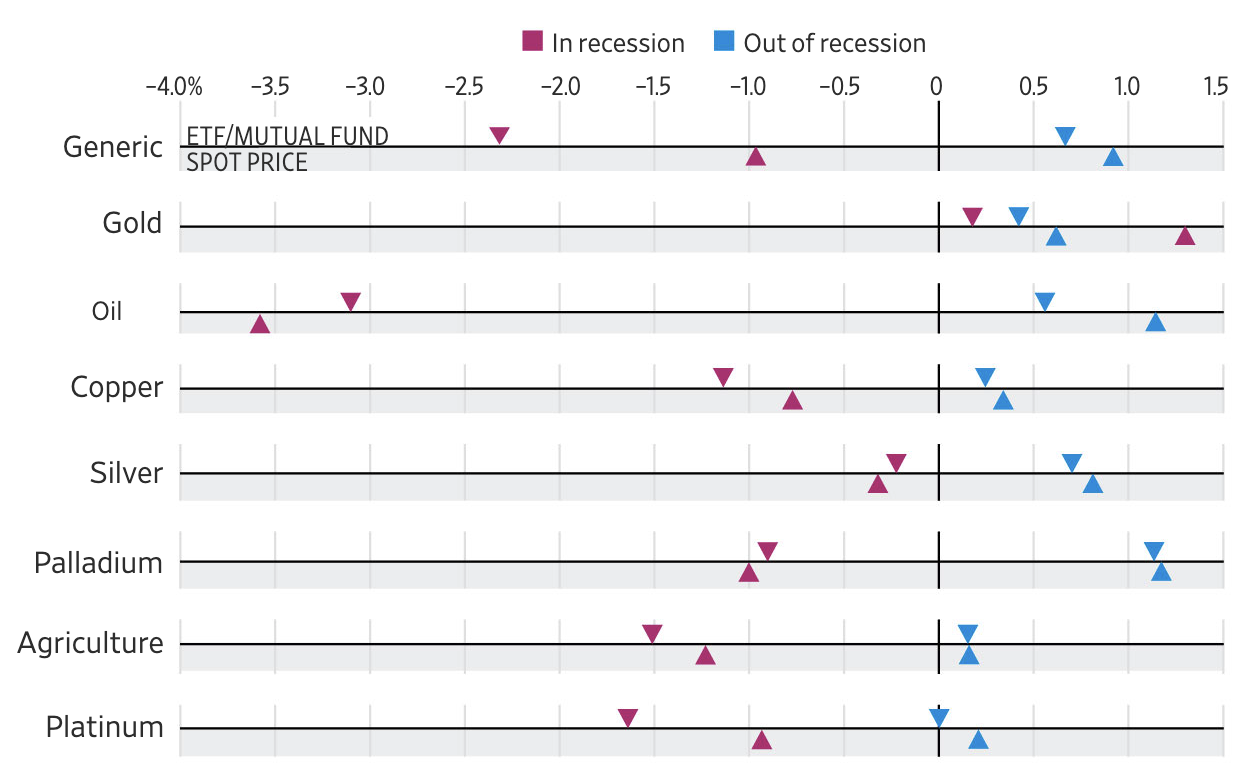
Only the gold funds consistently delivered a positive return during recessions – an average of 0.18% a month – with those funds tracking other commodities delivering negative returns.
What about outside of recessions?
“Over the past 25 years, when we are not in a recession, all commodity funds had positive returns and had an average monthly return of 0.49%,” writes Horstmeyer.
But, in general, the commodities themselves outperformed the funds that invest in the commodities companies.
“In all eight categories, the spot price return of the commodity did better than the fund tracking the commodity when not in a recession,” Horstmeyer says.
The study also indicated that during a recession, five of the eight commodities futures outperformed the commodities funds: “While it is definitely good to hold a gold fund during a recession, it is even better to hold the physical gold itself,” writes Horstmeyer.
And what about Australia’s commodities sector?
There’s currently no Australian equivalent of this study. But just looking at the most recent economic downturn, our materials sector held up considerably better than the broader market. Between 29 February and 23 March 2020, when the S&P/ASX 200 fell by 30%, the S&P/ASX 200 Materials Index was down “just” 20%.
The materials sector also recovered quicker, gaining 58% in the following 12 months, while the broader index rose by 40% in the 12 months to 23 March 2021.
Highly credentialed commodities investor, Daniel Sullivan of Janus Henderson, recently spoke with Livewire’s Chris Conway about the sector, and he’s decidedly bullish for at least the next couple of years.
The investment strategy he heads up, the Janus Henderson Global Natural Resources Fund, has returned more than 14% in the last year.
Sullivan’s preferred industries within the sector are lithium, copper, uranium, and forestry/timber building products. He’s also positive about the energy sector, particularly upstream oil and gas.
Lithium
ASX-listed miner, Pilbara Minerals (ASX: PLS) is one of two lithium producers in the Janus Henderson fund’s top 10 holdings – alongside US-listed Sociedad Quimica y Minera de Chile (NYSE: SQM).
By market cap, Pilbara is Australia’s biggest lithium producer, alongside Mineral Resources (ASX: MIN) and Allkem (ASX: AKE).
What do the brokers think?
Pilbara’s Q4 update saw production in line with the consensus view as measured by StreetAccount’s FactSet, resulting in higher free cash flow and a strengthened balance sheet.
But analysts are cautious in the face of market volatility and perceptions of limited upside potential in the lithium space. (This view was shared by energy fund specialist, Tribeca Investment Partners' Todd Warren, and Shaw and Partners' Andrew Hines during a recent Market Matters webinar.)
Morgans' analyst Max Vickerson downgraded Pilbara to HOLD from Add but left his price target unchanged at $5 a share.
On the other hand, Jarden analyst Ben Lyons upgraded the company to UNDERWEIGHT from Sell and lifted his price target to $4.10.
RBC Capital Markets analyst Kaan Peker left his rating for Pilbara Minerals as OUTPERFORM but lifted his price target to $5.75 from $5.50.
JPMorgan's Al Harvey maintained his NEUTRAL rating but lowered his price target to $4.70 from $4.80.
Pilbara Minerals was trading at $5.32 a share at the market close on Tuesday 8 August.
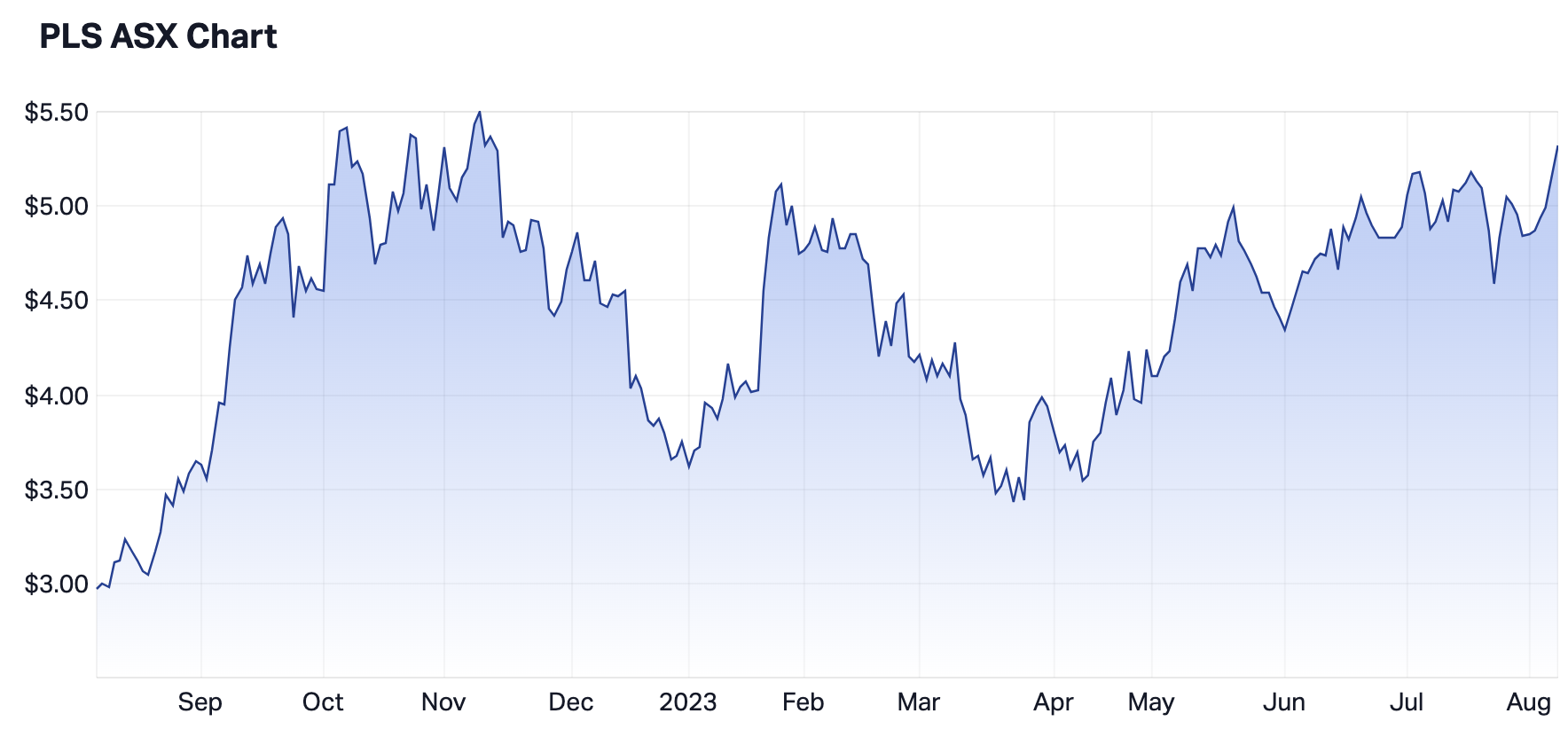
Copper
Another ASX-listed firm that’s also a top 10 holding in the Janus Henderson portfolio, diversified miner BHP Group (ASX: BHP) is the local exchange’s biggest copper producer. That's after this year’s $9.6 billion acquisition of Oz Minerals, which gave BHP control of Carrapateena, a South Australian copper mine that produced $964 million worth of metal in 2022. The deal also gave BHP control of Prominent Hill, a copper, silver, and gold mine also in South Australia.
The two assets are located on either side of BHP’s existing Olympic Dam mine and BHP’s prime Australian copper growth option, the Oak Dam copper discovery.
BHP’s Q4 copper production of 476,000 kilotonnes was in line with StreetAccount’s expected output, the company guiding toward a range of between 1,720kt and 1,910kt in FY24, a year-on-year increase of up to 11%.
What do the brokers think?
Several analysts suggest that BHP's valuation remains “unstretched,” according to StreetAccount, while others contend its share price upside is limited from here.
“Despite this, the potential for medium-term upgrades fuelled by strong iron ore prices and possible China stimulus keeps BHP favoured among many,” StreetAccount says.
Goldman Sachs still rates BHP as a BUY, but analyst Paul Young lowered his price target to $45.60 from $46.90.
JPMorgan analyst Lyndon Fagan left his rating at OVERWEIGHT and also maintained his price target at $47.
UBS’s Lachlan Shaw maintains a negative view on BHP based on a cautious view on its iron ore business but still anticipates a strong finish to the financial year. He left both his SELL rating and price target unchanged, at SELL and $37.
BHP shares closed at $45.32 on Tuesday 8 August.
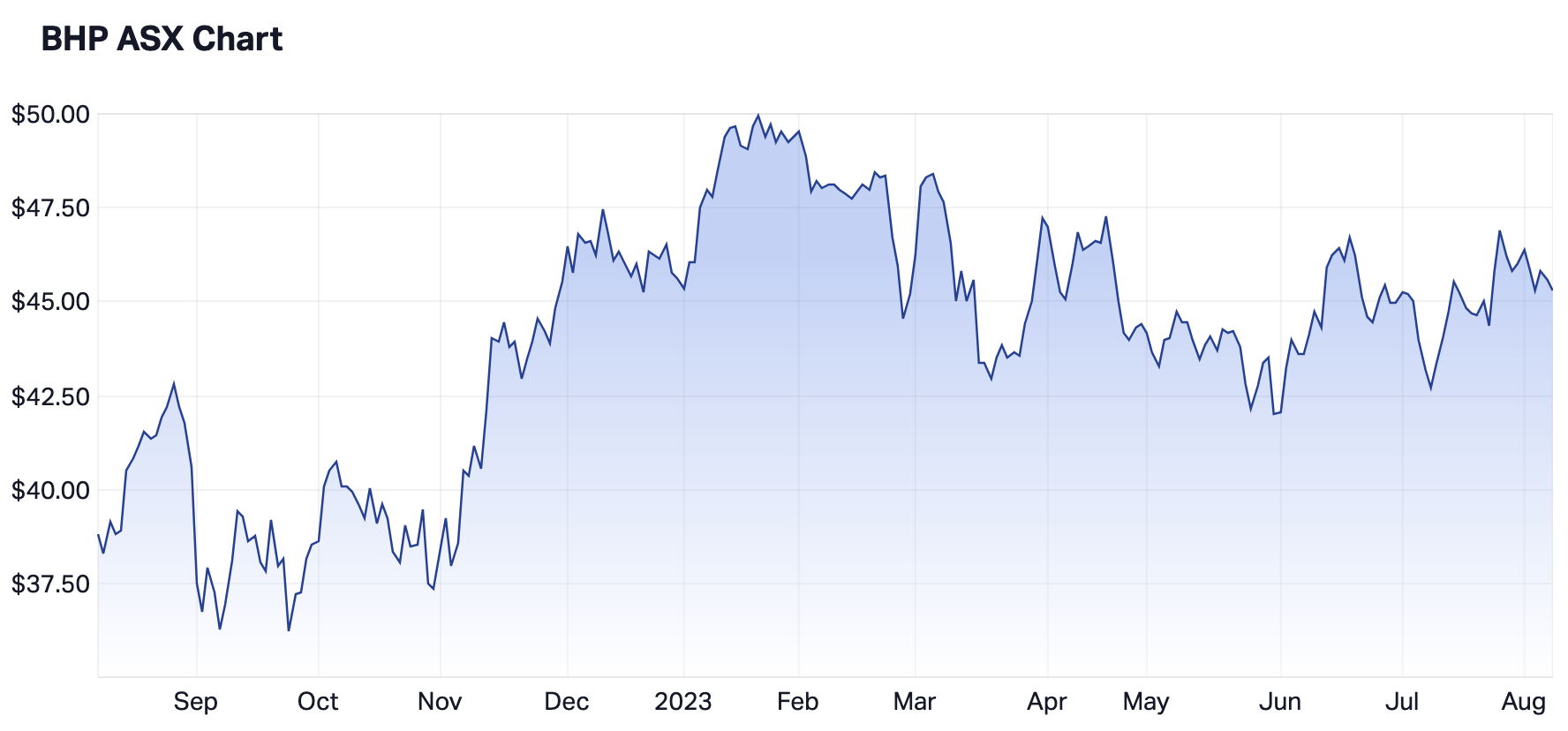
Gold
While Gold isn’t a commodity that currently looms large on Janus Henderson’s radar, it’s commonly regarded as an inflation hedge – and was called out in the study mentioned earlier.
Gold prices rallied as much as 25% between November 2022 and the end of June 2023.
Newcrest Mining (ASX: NCM) is Australia’s largest gold producer, producing 556 kilo-ounces in the fourth quarter of 2023. It's now being folded into the world's largest gold miner, Newmont Corp (NYSE: NEM), after the firm's $26 billion takeover bid was accepted in mid-May.
De Grey Mining ASX: DEG also ranks among Australia’s 10 largest gold producers, having grown its market cap to more than $2 billion, from $50 million back in 2019, as noted recently by Livewire contributor Barry FitzGerald.
The company was added to RBC Capital Markets’ coverage on 3 August, with an OUTPERFORM rating and a price target of $1.80 a share.
Goldman Sachs initiated coverage on 4 July with a NEUTRAL rating and $1.35 price target.
UBS upgraded the company to BUY from Neutral on 31 May, with a price target of $1.80.
De Grey shares were trading at $1.35 at the market close on Tuesday 8 August.
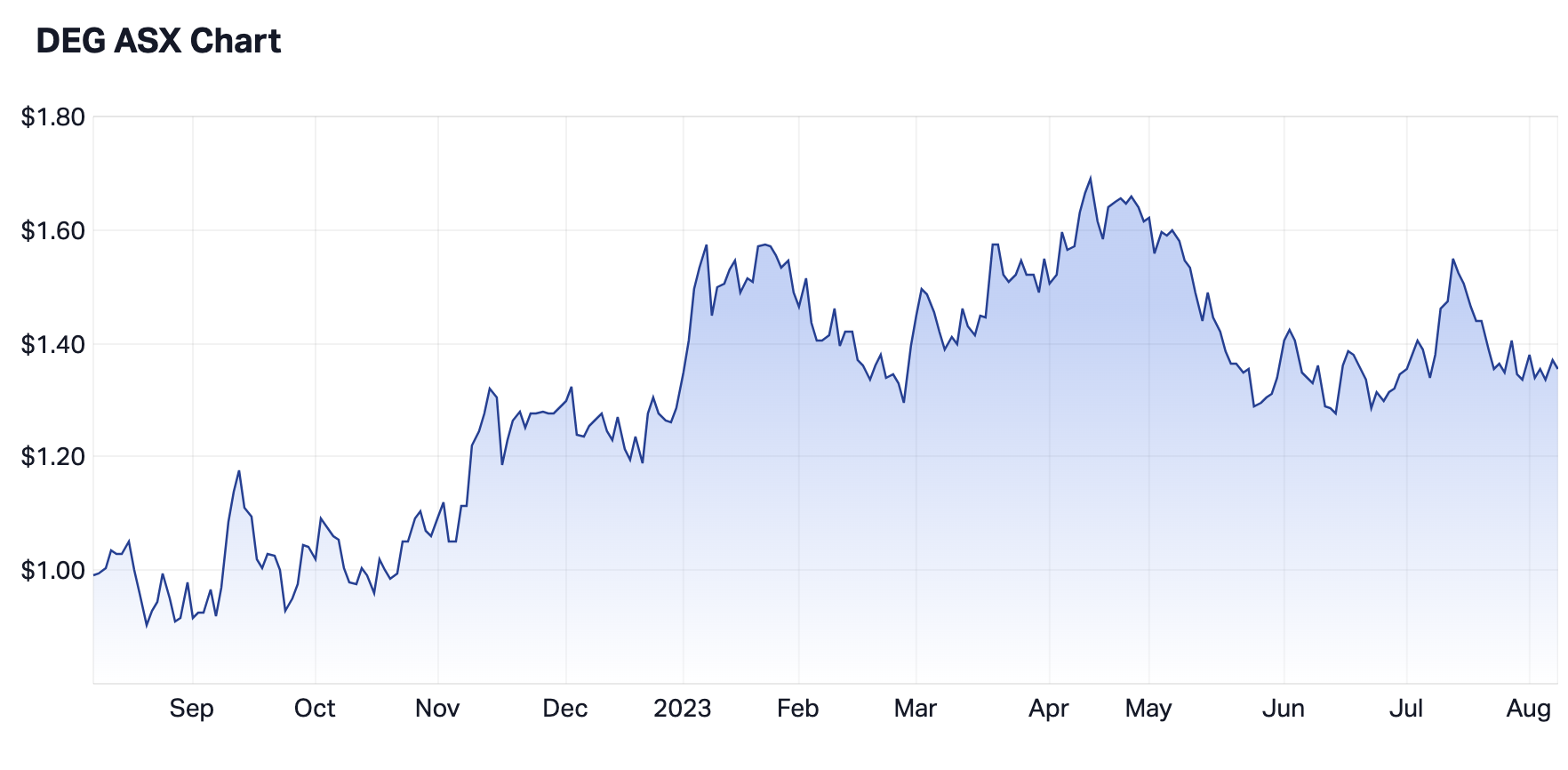
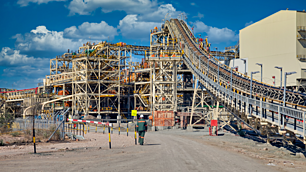.png)
2 topics
8 stocks mentioned
1 fund mentioned
2 contributors mentioned

